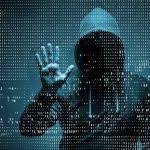Winning the Cyber War Insights from Israel Soong and Emily Harding.
The battleground has shifted dramatically from traditional military engagements to the increasingly complex realm of cyber space. As cyber conflicts escalate, understanding how nations navigate this digital domain is critical. In a recent conversation with Israel Soong, the National Security Council Director of East Asia & Pacific Cyber Policy, and Emily Harding, Director of the Intelligence, National Security, and Technology (INT) Program at the Center for Strategic and International Studies (CSIS), we gained vital insights into the evolving landscape of U.S. cybersecurity, the strategies of adversaries like Iran, Russia, and China, and how the U.S. and its allies can prepare for future cyber competition.
The New Age of Cyber Warfare
Cyber warfare is no longer an emerging threat; it has become a central component of national security dialogues. As Soong aptly noted, “Cyber is where the new dimensions of conflict are unfolding.” With the rapid advancement of technology, nation-states are increasingly leveraging cyber capabilities to pursue strategic objectives without crossing into kinetic warfare.
Adversaries in the Cyber Domain
Iran and Russia: Cyber Tactics and Strategies
During the discussion, Harding shed light on how countries like Iran and Russia employ unique strategies to exert influence and destabilize their adversaries.
- Iran: Known for its stealthy and often destructive cyber operations, Iran has developed capabilities that prioritize disinformation and disruption. Soong highlighted recent Iranian activities aimed at undermining regional stability, revealing that their tactics include attacks on critical infrastructure and cyber espionage. These operations often align with broader geopolitical goals, including regional dominance and retaliation against perceived threats.
- Russia: As a pioneer in cyber warfare, Russia utilizes information warfare and sophisticated hacking to achieve strategic aims. Harding emphasized the Kremlin’s extensive use of cyber tools to influence democratic processes in Western democracies. Russian cyber activities are characterized by their integration with disinformation campaigns, which are designed to fracture societal cohesion and manipulate public opinion.
China’s Cyber Strategy: A Comprehensive Approach
China’s approach to cyber strategy can be viewed through a multifaceted lens. Soong elaborated on the “whole-of-society” strategy adopted by China, which incorporates state, private sector, and even civilian capacities into their cyber efforts.
China employs a combination of aggressive cyber espionage to acquire intellectual property and the integration of advanced AI and cyber capabilities into its military strategy. This is underscored by the country’s focus on securing technological supremacy, critical to maintaining its position in global power dynamics. The conversation underscored the necessity of understanding China’s strategic intentions in cyberspace and the implications for U.S. national security.
Preparing for Cyber Competition
As the conversation reached its climax, discussions shifted towards how the U.S. and its allies can prepare for the challenges presented by cyber competition.
- Strengthening Alliances: Soong emphasized the importance of a coordinated approach among allies. As adversaries engage in cyber activities across borders, enhancing collaboration in intelligence sharing, threat detection, and response mechanisms is imperative. Cyber diplomacy should be a priority to establish shared norms of behavior in cyberspace.
- Building Resilience: Both experts agreed that resilience is key. U.S. infrastructure must be hardened against potential cyber attacks. This means not only investing in advanced cyber defenses but also establishing rapid response capabilities to mitigate the impact of attacks.
- Fostering Innovation: To stay ahead in the cyber arms race, innovation in cybersecurity technology is vital. The public and private sectors should work in tandem to develop new tools and countermeasures that can deter cyber threats and defend critical assets.
- Public Awareness and Education: Enhancing public understanding of cybersecurity risks and best practices can lead to a more cyber-aware citizenry. Education initiatives can fortify the human element of cybersecurity, often considered the weakest link.
Conclusion
The insights shared by Israel Soong and Emily Harding mark the beginning of an essential dialogue on the future of cybersecurity. As we confront an era of heightened cyber competition, it is paramount for the U.S. and its allies to adopt a proactive, integrated, and resilient approach. By understanding adversarial strategies and enhancing collective cybersecurity measures, we can work towards not just “winning” the cyber war but ensuring a stable digital future for all. The stakes are high, but together, we can navigate this complexity and safeguard national security in the digital age.






